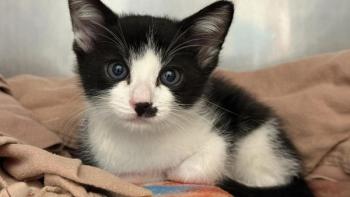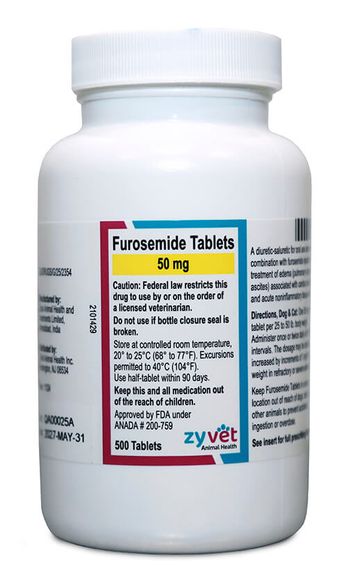
Feline hypoadrenocorticism: Yes, cats get Addisons disease too
While theres no cure for this adrenal condition, cats can achieve their full life expectancy with appropriate treatment.
Shutterstock.com
Think Addison's is just a dog disease? Not so fast-while it's uncommon relative to the incidence in dogs, cats can have primary hypoadrenocorticism too. The disease tends to affect middle-aged cats but can show up in felines anywhere from 1.5 to 14 years of age. No sex or breed seems to be affected more than another.1-3
Diagnosis
The most common problems that show up in the history are lethargy, anorexia and weight loss. Unlike dogs with adrenal insufficiency, cats with Addison's disease don't tend to experience diarrhea, but 40% have histories of episodic vomiting.4-12 Similar to hypoadrenocorticism in dogs, cats often experience waxing and waning of clinical disease, including temporary “remissions” associated with parenteral fluid or corticosteroid administration.
The most common findings on physical examination include depression, weakness and mild to severe dehydration. Up to 40% of patients present with severe shock, weak pulses, slow capillary refill times and extreme weakness or collapse.1-3 Cats tend to experience clinical signs for a median of 14 days before hypoadrenocorticism is diagnosed, with the range of duration spanning five to 100 days.
Clinicopathologic findings in cats with primary hypoadrenocorticism parallel the patterns seen in dogs. Most cats show serum electrolyte changes characteristic of mineralocorticoid deficiency. Serum sodium:potassium ratios are less than 24 (range 17.9-23.7) with hyponatremia, hypochloremia and hyperkalemia. All cats have mild to severe azotemia (blood urea nitrogen concentration = 31 to 80 mg/dl [normal range = 5 to 30 mg/dl], creatinine concentration = 1.6 to 6 mg/dl [normal range = 0.5 to 1.5 mg/dl]) and hyperphosphatemia (inorganic phosphorus concentration = 6.1 to 9.1 mg/dl [normal range 3 to 6 mg/dl]). Hypercalcemia has been noted in one cat.2 Keep in mind that electrolyte abnormalities similar to those associated with Addison's disease can also occur in a variety of clinical disorders in cats.13
Despite signs of dehydration and prerenal azotemia, urine specific gravity tends to be greater than 1.030 in only 40% of cats.2 The loss of renal medullary solutes, particularly sodium, is thought to result in impaired renal concentrating ability. Distinguishing hypoadrenocorticism from acute or chronic renal failure is critical to establishing an appropriate prognosis for clients.
Treatment
Long-term management of cats with primary hypoadrenocorticism requires lifetime mineralocorticoid and glucocorticoid supplementation. Oral administration of fludrocortisone acetate (0.1 mg/day) or intramuscular injections of desoxycorticosterone pivalate (DOCP; 10 to 12.5 mg/month) have been successful in maintaining cats with Addison's disease.
Adjust the dose of mineralocorticoid as needed based on follow-up serum electrolyte concentrations monitored every one to two weeks during the initial maintenance period. Normal electrolyte parameters two weeks after DOCP injection suggest adequate dosing but do not provide information concerning the duration of action of each injection. Eighty percent of dogs require DOCP more frequently than every 30 days (5% need to receive DOCP every three weeks), so frequent sampling during the early management period is recommended.14
Prednisone (1.25 mg orally once a day) or intramuscular methylprednisolone acetate (10 mg once a month), can be used to provide adequate long-term glucocorticoid supplementation. Cats surviving the initial adrenal crisis can be managed successfully for many years. Sixty percent of cats diagnosed with primary hypoadrenocorticism are alive a median of 2.75 years after diagnosis.2 With appropriate glucocorticoid and mineralocorticoid supplementation, cats with adrenocortical insufficiency should have a normal life expectancy.
Dr. David Bruyette is currently the chief medical officer at Anivive Lifesciences and a frequent speaker at the CVC veterinary conferences.
References
1. Peterson ME, Greco DS, Orth DN. Primary hypoadrenocorticism in ten cats. J Vet Intern Med 1989;3(2):55-58.
2. Myers NC, Bruyette DS. Feline adrenocortical diseases: Part II-Hypoadrenocorticism. Semin Vet Med Surg (Small Anim) 1994;9(3):144-47.
3. Duesberg C, Peterson ME. Adrenal disorders in cats. Vet Clin North Am Small Anim Pract 1997 Mar;27(2):321-47.
4. Redden B. Feline Hypoadrenocorticism. Compend 2007 27:697-705.
5. Woolcock AD, Ward C. Successful treatment of a cat with primary hypoadrenocorticism and severe hyponatremia with desoxycorticosterone pivalate (DOCP). Can Vet J 2015 Nov;56(11):1158-60.
6. Rudinsky AJ, Clark ES, Russell DS, Gilor C. Adrenal insufficiency secondary to lymphocytic panhypophysitis in a cat. Aust Vet J 2015 Sep;93(9):327-31.
7. Sicken J, Neiger R. Addisonian crisis and severe acidosis in a cat: a case of feline hypoadrenocorticism. J Feline Med Surg 2013 Oct;15(10):941-44.
8. Kasabalis D, Bodina E, Saridomichelakis MN. Severe hypoglycaemia in a cat with primary hypoadrenocorticism. J Feline Med Surg 2012 Oct;14(10):755-58.
9. Tasker S, MacKay AD, Sparkes AH. A case of feline primary hypoadrenocorticism. J Feline Med Surg 1999 Dec;1(4):257-60.
10. Stonehewer J, Tasker S. Hypoadrenocorticism in a cat. J Small Anim Pract 2001 Apr;42(4):186-90.
11. Parnell NK, Powell LL, Hohenhaus AE, Patnaik AK, Peterson ME. Hypoadrenocorticism as the primary manifestation of lymphoma in two cats. J Am Vet Med Assoc 1999 Apr 15;214(8):1208-11, 1200.
12. Johnessee JS, Peterson ME, Gilbertson SR. Primary hypoadrenocorticism in a cat. J Am Vet Med Assoc 1983 Oct 15;183(8):881-82.
13. Bell R, Mellor DJ, Ramsey I, Knottenbelt C. Decreased sodium:potassium ratios in cats: 49 cases. Vet Clin Pathol 2005 Jun;34(2):110-4.
14. Lynn RC, Feldman EC, Nelson RW. Efficacy of microcrystalline desoxycorticosterone pivalate for treatment of hypoadrenocorticism in dogs. DOCP Clinical Study Group. J Am Vet Med Assoc 1993 Feb 1;202(3):392-96.
Newsletter
From exam room tips to practice management insights, get trusted veterinary news delivered straight to your inbox—subscribe to dvm360.





